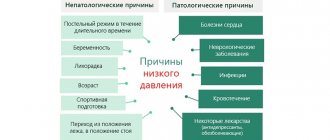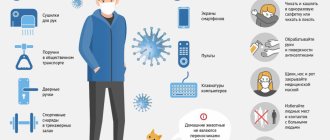An increase in temperature is a protective reaction of the body. In this way, the body tries to kill viruses and infections that have entered. Therefore, high temperature is a symptom of many diseases. Most often, this becomes a reason to seek medical help.
The health of a child is a very sensitive topic for every loving parent. There is no need to rush and try to bring down the temperature with medications. Most often, antipyretics prevent the immune system from producing antibodies, that is, fighting viruses and infections on its own. Thus, the human immune system becomes weaker. It is better to contact a specialist who will prescribe a course of treatment.
If it is not possible to see a doctor, then there are several things to consider. It is important in this case to understand what caused the jump in the child’s body temperature. Typically, fever is a symptom of a wide range of diseases - from acute respiratory viral infections to kidney inflammation. Before you start lowering your child's temperature, it is important to consider the numbers on the thermometer.
What temperature is considered elevated in children?
The concept of “normal temperature” in children is relative.
Its indicators are influenced by age, physical activity and emotional state, temperature and humidity of the environment. For example, in infants in the first months of life, a temperature of up to 37.5°C (measured in the axillary region) is considered normal, and in children under three years of age, the upper limit of normal is a temperature of 37.3°C.¹ The thermometer readings are also affected by the location of measurement temperature. In children it can be measured in four places:
- in the rectum (rectal);
- in the mouth (oral);
- in the ear (tympanic);
- in the axillary region (axillary).
For most parents, the usual place for measuring a child’s temperature is the armpit. In this case, the skin under the armpit should be dry. To measure the temperature, the child's hand must be pressed to the chest, placing the thermometer under the armpit.
A child’s axillary temperature is considered normal within the range of 35.8–37.0°C. If the temperature is measured in the rectum or ear, it is usually 0.5–0.6°C higher than the axillary temperature. The temperature in the mouth should be measured no earlier than 30 minutes after eating. It is 0.2–0.3°C larger than the axillary one.
To assess the temperature in children, mercury, galinstan, electronic and infrared thermometers are used. Each type of thermometer has its own advantages and disadvantages. The choice depends on the age of the child and the preferences of the parents. You can read more about thermometers here.
For children under three months of age, a reliable criterion for assessing temperature is the reading of a rectal electronic thermometer when measured for 30–60 seconds.
Thus, elevated temperature in a child can be considered:
- above 37.2°C - with axillary measurement;
- more than 38.0°C - when measured in the rectum or ear;
- more than 37.8°C - when measured in the mouth.
Depending on the degree of temperature increase, there are:
- subfebrile - fluctuations within 37.1–38.0°C;
- moderate febrile - 38.1–39.0°C;
- high febrile - 39.1–41.0°C;
- hyperpyretic - above 41.0°C.
In what cases should you call a doctor?
It may happen that the temperature of 37-37.5°C lasted for several days, after which the child’s condition began to deteriorate. This situation requires urgent medical intervention. The reason to call a doctor is if the child has the following symptoms:
- temperature that has risen to 39°C or more;
- difficulty breathing or shortness of breath;
- there are signs of dehydration;
- the child has vomiting and diarrhea;
- chronic diseases have worsened;
- The child began to have convulsions and numbness in his limbs.
Parents should soberly assess the situation and seek qualified medical help in a timely manner without triggering the situation.
Causes of high temperature in children
The most common causes of high fever in children are infections (viral and bacterial).
Causative agents of infectious diseases contain exogenous pyrogens. When these biologically active substances enter the body, they can increase the temperature. Exogenous pyrogens cause the blood cells and some organs to produce endogenous pyrogens (interferons, interleukins). They rebuild the work of the hypothalamus, the thermoregulation center located in the brain. For this reason, fever occurs - an increase in temperature above 38 ° C in the rectum and above 37.5 ° C in the armpit, during which the body fights infection.
Fever itself is not considered dangerous. It occurs with various diseases, most often with bacterial and various viral infections, for example, ARVI or influenza. Moreover, in the first days of the development of infections, children may only have a high temperature without symptoms. There are also non-infectious causes of high temperature: tooth growth, overheating in the sun. We will only talk about the most common causes of childhood fever. Our short test will also help you better understand the symptoms.
What are the causes of low-grade fever?
Failure in the thermoregulation system of a child’s body can be caused by various negative factors, such as changes in air temperature, stress, hormone imbalance or taking medications. These reasons may cause a one-time failure and do not pose a serious health hazard.
An alarming “bell” for parents is repeated temperature rises, or if the elevated temperature lasts for a long time. The reasons can be divided into two large groups:
- Infectious. Infection in 80% of cases is the cause of dysfunction of the thermoregulatory center. The general symptoms are complemented by catarrhal symptoms and signs of intoxication.
- Non-infectious. This group includes systemic diseases, the postoperative period and the period after vaccination, heat stroke, and trauma.
Thus, low-grade fever is the result of a restructuring of thermoregulatory processes, which occurs due to the introduction of infection, allergies or other influences into the body.
ARVI
ARVI is a viral infection affecting the upper respiratory tract. This is the most common cause of fever. ARVI is accompanied by a runny nose, nasal congestion, possible sore throat, change in voice, and cough. Modern international guidelines for doctors call ARVI a “self-limiting disease” and advise only to ease the child’s well-being and monitor the emergence of possible complications. Frequent complications of respiratory viral infections in children under 1.5 years of age are otitis media (inflammation of the middle ear) and laryngitis. Signs of laryngitis - hoarseness, barking cough - often occur at night and in the early morning. When they appear, you must definitely call an ambulance if the attack did not stop after inhalation with saline solution or Borjomi.
What not to do when the temperature rises
- Do not undress your child or cool him or her with blows or rubs; fever is a natural and healthy response to infection. Hypothermia can lead to complications from the infection.
- Do not cover your baby with a warm blanket or wrap him up, as this may cause heat stroke. Just cover your baby with a sheet or light blanket.
- Do not give aspirin to children under 16 years of age. Absolutely never! This may be due to a rare but dangerous disease called Reye's syndrome.
- In children under one year of age, medications available in the form of rectal suppositories are recommended to reduce fever.
- Do not self-medicate. For young children, the dose of drugs and the frequency of their use should be calculated individually; the prescription can only be made by a doctor after diagnosis.
Herpesvirus infections
Herpes virus infections are caused by herpes simplex viruses types 1 and 2. The onset of herpetic infection in children is often accompanied by a temperature of 39–40°C and stomatitis (painful rashes on the oral mucosa, Fig. 1). This makes eating difficult and causes the child to refuse food.
Figure 1. Manifestations of stomatitis. Source: mrfiza / Depositphotos
Herpetic stomatitis most often occurs in children under three years of age. They are especially difficult for babies in the first month of life. In this case, small blisters may appear on a reddened base on the skin, mucous membranes of the mouth and eyes.
In children in the first month of life, herpes is often accompanied by inflammation of the brain and meninges (meningoencephalitis), since this virus “loves” to settle and multiply in the nervous tissue.
A type of herpes infection is EBV infection (caused by the Epstein-Barr virus or herpesvirus type 4). According to statistics, about 50% of children under the age of 5 years have already suffered from this infection.2 Fever, enlargement of all groups of lymph nodes (especially cervical), inflammation of the tonsils and the appearance of rashes after the use of penicillin antibiotics are its typical symptoms.
Childhood infections with rash
Children's infections with the presence of a rash are also called “infectious exanthemas.” Based on the nature of the rash, the doctor will make a diagnosis and determine the cause of the child’s fever. Infectious exanthemas include chicken pox, measles, sudden exanthema, scarlet fever.
Chicken pox
Chickenpox is a highly contagious disease with airborne transmission. It is caused by herpes virus type 3 (Varicella Zoster). The chickenpox rash is characterized by swollen pale pink spots with a vesicle in the center, its size is 1-3 mm. The main difference between this rash is that at the same time there may be spots, blisters and crusts on the body, since some are just appearing, while others are already passing.
The rashes are localized on the scalp, face, neck, torso, and limbs (Fig. 2); there may be elements of the rash on the mucous membranes of the mouth, throat, genitals, and sometimes in the eye area. After a few days, the blisters dry out and form crusts, which eventually break off on their own.
Figure 2. Chickenpox rash in a child. Source: pavsie / Depositphotos
The rash may be accompanied by itching. When combing them or tearing off the crusts, small scars form on the skin.
In most cases, chickenpox in children is relatively mild. The severity of chickenpox depends on the severity and duration of the fever. In severe cases, it lasts up to 14 days. Complications such as pneumonia and encephalitis (inflammation of the brain) are possible.
Measles
Measles is an extremely contagious viral infection. It is also called “childhood plague.”3 Despite mandatory immunization, the measles epidemiological situation in Russia cannot be considered favorable, since there is not a sufficient number of vaccinated people.4
The infection begins with respiratory symptoms against a background of high temperature: runny nose, sneezing, dry cough, swelling and inflammation of the eye mucosa, photophobia. From the second day of illness, small white spots with redness at the edges (Filatov-Belsky-Koplik spots) can be seen on the mucous membrane of the cheeks. On days 4–5 of the illness, a characteristic rash appears on the face, neck and behind the ears in the form of pink and red spots, which gradually spread from top to bottom and tend to merge (Fig. 3). Then they peel off, accompanied by light brown pigmentation. Measles is dangerous due to its complications. This can be pneumonia, otitis media, encephalitis with subsequent disability.
Figure 3. Measles: rash on the face, torso and arms (second day of the rash period). Source: PHIL CDC
Sudden exanthema
Sudden exanthema (infantile roseola, pseudorubella, sixth disease, three-day fever) is an infection caused by herpesviruses types 6 and 7. Children aged six months to two years are most vulnerable. As the disease progresses, rashes appear: small pink spots with maximum localization in the torso area. They turn pale when pressed and may itch. Before the appearance of roseola, a temperature of 38–40 ° C is noted without symptoms, and the posterior cervical and mandibular lymph nodes may enlarge.
Scarlet fever
Scarlet fever is a bacterial infection in which, in addition to fever, a sore throat develops and a rash appears, which is caused by the absorption of the pathogen's toxin, beta-hemolytic streptococcus. Scarlet fever rashes are bright red, 1–2 mm in diameter, slightly rough to the touch. Characteristic features include a “strawberry tongue” (with emphasized papillae) and pallor of the nasolabial triangle. In the axillary and inguinal folds, the color of the rash is more saturated.
After the rash resolves, slight peeling appears on the skin in the form of “thin layers” on the fingers and toes. 2–5 weeks after scarlet fever resolves, complications such as rheumatism, glomerulonephritis, and psoriasis are possible.
Enteroviral infections
About 100 varieties of viruses are known (Enterovirus, Coxsackie, ECHO, etc.), which cause outbreaks of diseases mainly in the summer-autumn period, during summer holidays at sea.
Signs of enterovirus infection vary among different types of enteroviruses. Enteroviral fever occurs like the flu, when there is a sharp fever and muscle pain, headache, nausea, vomiting, and diarrhea may appear. In some cases, herpangina develops - painful blisters appear on the oral mucosa.
With some types of enterovirus infections, a characteristic rash appears on the palms, soles and oral mucosa (hand-foot-mouth syndrome or viral pemphigus).
The intestinal form of enterovirus infections is accompanied by watery diarrhea up to 5–10 times a day, abdominal pain, and infrequent vomiting. In children under one year of age, this form of infection can cause dehydration.
Epidemic myalgia is also a manifestation of enterovirus infection. It is characterized by pain in the chest and abdomen, aggravated by breathing and coughing.
The most severe manifestations of enterovirus infections can be meningitis and encephalitis - brain damage with vomiting, convulsions, weakness in the limbs, and impaired consciousness.
Tick-borne encephalitis
Tick-borne encephalitis is a severe viral disease that occurs in areas inhabited by ixodid ticks (Siberia, the Far East, central Russia, Ukraine).
Infection occurs as a result of infection with the virus after being bitten or crushed by a tick. It is possible to get infected by consuming unboiled milk from cows, goats and sheep.
Clinical manifestations of the disease begin on average after two weeks, accompanied by a temperature of 38–40°C, headache, muscle aches, photophobia, discomfort in the eye area, oculomotor disorders, movement disorders, convulsions, and possible loss of consciousness.
Tick-borne encephalitis can cause irreversible health problems. To prevent the disease in endemic areas, immunoprophylaxis with a vaccine and specific immunoglobulin is used.
Bacterial infections
Among the pathogens in children, the most important are Escherichia coli, beta-hemolytic streptococcus, staphylococcus, pneumococcus, Haemophilus influenzae, salmonella, and enterobacter. These pathogens cause bacterial pneumonia, infections of the skin and subcutaneous tissue, genitourinary tract, and intestines. The most common cause of a high fever in an asymptomatic child is a bacterial urinary tract infection.
Non-infectious causes of high fever
Non-infectious causes of high fever are less common. They can be presented:
- Reactions to various medications and vaccines. Among such drugs, antibiotics and sulfonamides are in the first place, as well as vaccines against whooping cough, measles and influenza, pneumococcus, and tuberculosis.
- Autoimmune diseases: lupus erythematosus, vasculitis, juvenile arthritis, ulcerative colitis (inflammatory bowel disease).
- Dysfunction of the central nervous system against the background of traumatic brain and birth injuries, cerebral hemorrhages, prolonged psycho-emotional stress.
- Teeth growth.
- Overheating in the sun.
In some cases, the cause of high temperature is malignant tumors (leukemia, lymphoma).
What diseases can fever indicate?
We list possible diseases from simple to the most serious, which are manifested by low-grade fever:
- infectious diseases in chronic form: sinusitis, tonsillitis, otitis media, herpes;
- oncological: leukemia, lymphoma, hepatoma, etc.;
- autoimmune: arthritis, vasculitis, lupus, scleroderma;
- endocrine and metabolic disorders: diabetes mellitus, thyrotoxicosis, hyperthyroidism, pheochromocytoma, etc.;
- digestive tract infections: gastroenteritis.
How to care for a sick child at home
For a child with a fever, it is important to create a comfortable environment at home. You should not dress him warmly or wrap him up (except during periods of severe chills); he should be ventilated: the temperature in the room should be 20–22°C.
An ill child becomes lethargic or restless and refuses to eat or drink, which can lead to dehydration with a fever. Therefore, it is important to give your baby water as often as possible. To do this, it is better to use warm or cool compotes, fruit drinks, diluted juices, jelly, and weak tea. Children under two years old should drink about 1 liter of liquid per day, older children - 1.5–2 liters. If your baby is breastfed, you need to put him to the breast more often.
At high temperatures, it is important to maintain a drinking regime. Photo: lia_russy / Depositphotos
An indicator of adequate drinking is passing light-colored urine every 4 hours. It is necessary to monitor the child so as not to miss important symptoms and consult a doctor in a timely manner. Walking and washing a feverish baby should not be done in cases where it makes the child feel uncomfortable.
How to alleviate the child's condition?
Several recommendations will help your child cope with this unpleasant condition. They are aimed at increasing heat transfer and reducing heat production. In practice, this can be done as follows:
- provide the child with bed rest or a minimum of physical activity;
- try to control the child’s emotions, screams and tantrums contribute to an increase in temperature;
- feed the child as desired, do not insist on feeding if he does not want to eat;
- Monitor the temperature of food, it is also better to avoid hot drinks (no more than 40°C);
- maintain an optimal climate in the room, namely about 20° (+/-2°);
- Give your child plenty of drink, it can be water, compote, juice, tea with raspberries.
These tips will help your child cope with low fever. However, parents should monitor the situation so that if the child’s condition worsens, they can take adequate measures.
When to lower the temperature
Fever itself is not a disease, but a protective reaction of the body, which is aimed at fighting viruses and bacteria.
The numbers on the thermometer are not always considered a criterion for the use of antipyretics.
An antipyretic should be given in cases where:
- the child feels unwell, cannot sleep, is capricious, and complains of a severe headache;
- there is a chill, the child is trembling, the skin has become pale, with a marbled tint;
- there are diseases of the nervous system, metabolic and heart diseases;
- child under one year old, premature;
- against the background of elevated temperature, the baby developed convulsions (or such a condition was observed in the past).
“There is no universal number on a thermometer before which the fever should not be reduced. It is more correct to focus on the baby’s well-being: if his temperature is 39.3°C, but he is already feeling hot and sweaty, you don’t have to give an antipyretic, the temperature will drop on its own. If it’s 37.2°C, but he’s shaking a lot with chills, don’t wait for any conventional numbers, give the drug. Remember that there is no goal to bring the temperature down to 36.6: it was 40.3, it became 38.9, but the child came to life, he felt better - this is a good sign and a sufficient effect.” An excerpt from the book by pediatrician Sergei Butria “Child's Health. How to learn to cope with illness and your own panic.”
Why does the temperature rise during illness?
It must be remembered that high temperature during infection is a protective mechanism. In response to a virus or bacteria entering the blood, the cells of our body begin to produce pyrogens (substances that cause an increase in body temperature, fever). They stimulate certain parts of the nervous system responsible for thermoregulation. The nerve endings of these sections give the blood vessels a signal to contract. This is how the body retains the heat it already has. Therefore, a child with fever looks pale.
At this time, muscle tissue receives a signal for active work. This allows the body to produce more heat. That's why the baby is shivering. When the temperature reaches the optimal level, according to our nervous system, the body gives the command to dilate the blood vessels. The child's skin turns red, the shaking stops, and sweating begins. This happens at approximately 38.5-39°C. Why at these numbers?
Firstly, at this temperature, inflammatory mediators are produced - substances that fight infection in our body.
Secondly, high temperature prevents the growth of bacteria.
It turns out that a high temperature is not at all scary, and is even very useful during an infection. If the child tolerates the elevated temperature well, you can not rush to bring it down, but let the immune system fight the disease.
How to reduce a child's temperature
The best choice of antipyretics for children is paracetamol or ibuprofen. Suspension or syrup forms of these drugs are more acceptable for children. It is also possible to use the products in rectal suppositories, especially if the child is vomiting.
Parents should carefully read the instructions for medications and monitor the dosage of medications. Thus, a single dose of paracetamol is 10–15 mg per 1 kg of child weight. The maximum permissible frequency is 4 times a day. Ibuprofen can be given no more than three times a day. Single dose: 5–10 mg per 1 kg of body weight.
Antipyretics do not need to be given regularly throughout the entire period of fever, especially against the background of antibiotics. It is not recommended to use 2 drugs at the same time and reduce the temperature to normal levels. If “white fever” occurs, when the skin is pale and the child’s hands and feet are cold to the touch, you can rub your palms and soles.
How to diagnose and how to treat?
As a rule, diagnostic measures for a child with a complaint of low-grade fever include hardware and laboratory research methods:
- examination of ENT organs using appropriate instruments;
- blood test: general, serological and biochemistry;
- sputum examination;
- if necessary, radiography and CT;
- Ultrasound diagnostics;
- echocardiography.
Based on the results of a comprehensive examination, the otolaryngologist makes a diagnosis and makes appropriate prescriptions.
Residents of Kaliningrad can make an appointment with a pediatric otolaryngologist by filling out a preliminary application on our website or calling: +7 (4012) 357-773 or +7 (4012) 973-100.
What to do if medications don't help
Sometimes parents are faced with a situation where taking one antipyretic does not have an effect. If, 2 hours after taking the medicine at the required dose, the temperature has not decreased, another antipyretic drug should be given.
“You can combine means. For example, give the child an antipyretic, an antispasmodic and some antiallergic drugs. An antispasmodic will dilate peripheral blood vessels, an antihistamine will relieve swelling, and an antipyretic will reduce the temperature. These are the three drugs that are included in the injection that the emergency doctor gives. If a child has a high temperature, it is advisable to alternate ibuprofen and paracetamol so as not to exceed the daily dosage. First give ibuprofen, after 4-6 hours paracetamol, then again after this interval ibuprofen and so on.”
Kovalchuk Maria Sergeevna
expert
UZ "GSSMP Minsk"
30 minutes after taking paracetamol or ibuprofen, you can wipe down with water at room temperature. In this case, the skin should dry on its own. A decrease in temperature of 1–1.5 degrees is enough to stop the procedure.
If no effect occurs, you should call an ambulance (Fig. 4).
Figure 4. What to do if a child has a high temperature. Source: MedPortal
When to call a doctor or ambulance
The reasons for being examined by a doctor in the near future should be:
- Child's age is up to 6 months.
- Risks of dehydration: diarrhea, vomiting, inability to maintain adequate drinking regimen.
- The appearance of a rash on the skin, which may indicate a certain disease or an allergic reaction to drug therapy.
- High fever without symptoms for three days.
- Deterioration of the child’s well-being and resumption of fever after temporary improvement. In this condition, there are likely risks of complications from viral infections.
It is necessary to call an ambulance if you observe:
- fever in children under three months, since the risk of severe infections at this age is high;
- convulsions;
- atypical sleep or atypical prolonged crying, agitation;
- uncontrollable vomiting, profuse diarrhea for more than 1-2 hours, signs of dehydration: dry diapers, dry tongue, sunken eyes;
- intermittent, difficult or too infrequent breathing;
- a rash on the skin that does not turn pale when pressed, similar to hemorrhages;
- stomach pain and severe headache;
- bulging fontanel;
- inability to press your chin to your chest (a symptom of meningitis).
If the high temperature does not go down or increases, despite all the measures taken (drinking plenty of fluids, taking two antipyretics, wiping with water), calling an ambulance is also necessary.
Treatment methods
Treatment tactics are selected individually, depending on the cause of the fever, the child’s age and many other factors. The best way to achieve a quick recovery is to consult a doctor and not abuse folk remedies. Specialists at the Clinical Brain Institute regularly provide consultations for parents on how to reduce their child’s temperature and what to pay attention to during further treatment. It will be most effective if you adhere to a few basic rules:
- do not reduce the temperature with medication unless there is an indication for this;
- if it is necessary to give a child an antipyretic (antipyretic) - the procedure is mandatory and requires constant monitoring of body temperature;
- do not take medications without a doctor’s prescription;
- do not use traditional methods - depending on the situation, they can either be useful or aggravate the situation.
High temperature in children is a reason to call an ambulance if it does not decrease after taking antipyretics and is accompanied by additional clinical signs. If the child is active, has preserved his appetite and has no complaints about his health, simple observation of the patient is recommended.
Is it worth reducing high fever in children?
Fever is an increase in body temperature. It is a mandatory step in the process of the immune system fighting infection. Physiologically, it represents the production of specific substances (pyrogens), which cause tissue heating. Such conditions are mandatory for full rehabilitation, since several processes occur simultaneously during fever:
- immunoglobulins (antibodies) are intensively produced - protective proteins of the immune system that bind to bacteria and destroy them;
- the reproduction of infectious pathogens slows down, since the normal human body temperature is the most comfortable for them;
- the amount of natural interferons—the main factor in the body’s antiviral defense—increases;
- The activity of phagocytes—cells that capture and destroy foreign particles, cells and other inclusions—increases.
In addition, a child's deterioration in well-being may also play a protective role. Reducing physical activity is a way to reduce the body's need for energy resources, which will be required to get rid of the infection. This process is also a way to avoid dehydration.
However, fever is beneficial for the body only if the temperature rises slightly. It should be remembered that at high degrees there remains a risk of destruction of blood proteins, which can result in a risk of death. In addition, the protective proteins of the immune system are produced only in a certain interval. When the temperature exceeds 38.5-39 degrees, their synthesis is sharply inhibited, which becomes a trigger for the rapid proliferation of infection. In addition, prolonged fever causes dangerous changes in the body if the situation is not supported with drugs:
- the need of tissues and cells for oxygen increases - therefore, for any illness that is accompanied by an increase in temperature, it is recommended to ventilate the premises;
- the risk of dehydration increases - this phenomenon is caused by excessive sweating and increased breathing;
- if the fever does not disappear within several days, there may be a deficiency of oxygen and nutrients in the central nervous system, which is dangerous for the functioning of the brain and spinal cord.
It is recommended to reduce high fever in children with drugs based on paracetamol or ibuprofen. Analgin and its analogues are more difficult to tolerate and are dangerous due to a number of side effects, including drug-induced hepatitis.
Specialists at the Clinical Brain Institute identify several situations in which it is worth using antipyretic drugs:
- The child’s body temperature rises to 38.5-39 degrees and continues to rise;
- the patient refuses water;
- difficulty breathing occurs;
- a history of febrile seizures (damage to central nervous system cells due to high temperature), as well as any diseases of the nervous system.
The dosage of drugs is calculated individually, depending on the age and weight of the child, initial indicators and the body’s response to the administration of the drug. However, if there is no urgent need to support the body with medication, you should not rush.
General recommendations
Medicines are not the only way to speed up recovery from high fever in children. The general situation and symptomatic treatment also make it possible to achieve positive dynamics. The procedures are easy to carry out at home in the absence of equipment and other capabilities. It is important to pay attention to the indoor climate and support the body in general ways.
Doctors at the Clinical Brain Institute identify several basic rules for parents that must be used when the first symptoms appear:
- constantly ventilate the room in which the child is located;
- provide plenty of fluids if the patient refuses water - the fluid deficiency is replenished intravenously;
- monitor the child’s hygiene - the opinion that it is not necessary to wash him when the temperature rises is incorrect;
- light clothing - clothing must be selected taking into account the person’s well-being.
Heat treatments are especially common as a primary home treatment method, but they can be dangerous for the baby. Mustard plasters, warming up the sinuses and other techniques increase blood circulation either in a certain area or throughout the body, which is really useful for some diseases. However, fever and local inflammation are among the protective methods of the immune system. The body localizes the infection to fight it more quickly and effectively. If you artificially accelerate blood circulation, infectious pathogens will also begin to spread throughout the body, causing dangerous consequences.
The air temperature in the room should remain at room temperature, and it is important to ensure constant ventilation. It is also recommended to carry out wet cleaning daily. These measures are necessary to prevent oxygen deficiency in tissues. Walking for the child should be stopped until complete recovery, but this measure is aimed at preventing the spread of infection among the population. It is not prohibited for a child to be outside in good weather during illness.
The child should be dressed in comfortable clothes made from natural fabrics that do not stop heat exchange processes. It is also recommended to bathe him daily and dry him frequently with a damp towel. It is better to refuse various rubdowns. Indeed, there is a method of bringing down the temperature with cold or alcohol compresses, but they can only worsen the situation. The local effect of cold on the skin increases the temperature of the internal organs, and alcohol vapors may be toxic to the child. Comfort and hygiene - these conditions are sufficient as general methods of therapy.
Drug treatments
Drug treatment is effective only if it is timely and the drugs are selected according to the recommendations of doctors. Today, the main method of reducing fever in pediatrics is Paracetamol (Ibuprofen) and its analogues. Previously, Aspirin and Analgin were also used, but due to the burden on the liver and the high likelihood of adverse reactions, it began to be used less frequently. However, products based on it are also available in pharmacies if it is not possible to give Paracetamol for any reason. Medicines for children are available in the form of syrup or suppositories. The first type is suitable for older patients, and in the second case it is possible to achieve a more accurate dosage. Before using any medications, including those specifically intended for children, it is important to consult your doctor. Individual characteristics and the clinical picture of the disease should also be taken into account when selecting the appropriate dose. The treatment regimen is supplemented with medications from other groups according to indications: for a bacterial infection, antibiotics will be needed, for a viral infection, interferons, and painkillers can also be used.
The Clinical Brain Institute has experience treating patients of all ages, including infants. The main difficulty of pediatrics is that it is important to recognize the symptoms of the disease in a timely manner based on the main, nonspecific and uncharacteristic symptoms, which is not always possible to do at home. An increase in temperature is a signal that the child needs to be examined to identify the cause and localization of the pathological process in the body. Our center has all the capabilities for comprehensive diagnostics, comprehensive treatment and child care, and parents can receive advice on the prevention of the most common diseases.
What is better not to do
No matter how severe a fever may be, parents should always remember that some medications can cause more harm than the disease itself. Aspirin is not recommended for antipyretics for children under 12 years of age, especially for chickenpox and influenza. This is due to the likelihood of developing Reye's syndrome, a rare life-threatening condition that causes cerebral edema and acute liver failure. Children under 12 years of age should not be given analgin in tablets, only in the form of an injection.
Nimesulide preparations, which have proven themselves as antipyretics in adults, are prohibited for use in children under 12 years of age due to the risk of toxic effects. The same applies to analgin.
Antibiotics and sulfa drugs can only be prescribed by a doctor. They are only effective against bacterial infections, and most causes of fevers in children are related to viruses.
A big misconception among parents is the use of all kinds of immunomodulators and antiviral drugs in children with ARVI. The use of specific antiviral drugs is justified only for influenza and some herpetic infections.
You should not apply cold objects to the body of a feverish child, as this provokes vasospasm. Rubbing with vinegar and alcohol solutions is also not necessary due to the possibility of toxic substances being absorbed through the skin. With “white fever”, when the skin becomes pale, the extremities are cold to the touch, there is chills, rubbing is undesirable, as it can increase vascular spasm.
Kovalchuk Maria Sergeevna
Emergency doctor
Wipe your child with water at room temperature, or even a little warmer - 20-25°C. Do not use hot or cold water and do not add anything to it, neither vinegar nor alcohol. Wipe your neck, armpits, groin folds, under the knees and palms. Let the water dry and repeat wiping several more times. When the water evaporates, heat exchanges with the environment and the child’s temperature decreases without pills.
How else can you help your body cope with the disease?
Since fever most often occurs during acute respiratory illnesses, there are ways to help the body cope with the infection faster. One of these agents is the immunomodulator IRS®19. This is a drug that contains a mixture of bacterial lysates (fragments of microbial cells) that most often cause respiratory infections.
Lysates cannot cause disease, but stimulate the immune system (that is, they cause an accelerated response of both specific and nonspecific immunity factors, especially local ones). Specific factors include the production of antibodies that bind to a specific antigen, destroy it and remove it from the source of infection. Nonspecific factors are lysozyme, interferons, phagocyte cells, which equally protect against any foreign agents that penetrate the mucosa.
IRS®19 is available as a nasal spray. The drug is prescribed from the first day of illness and for the prevention of acute respiratory infections (ARI) in adults and children from 3 months. For children under 3 years old, it is enough to inject one dose of the drug into each nasal passage twice a day, for children over 3 years old - one dose 2-5 times a day until the symptoms of the disease disappear.
What to do if the temperature of 39.2 °C does not go away for a long time?
The effect of using antipyretics develops within half an hour. But in a number of situations, taking medications does not provide a drop in body temperature, and it continues to remain high1. What to do in such cases and how to bring down the high temperature?
If the temperature of 39.2 °C does not decrease, call an ambulance immediately. Before her arrival, take a repeat dose of an antipyretic - this is acceptable as a one-time measure for persistent hyperthermia. If there is no chill, undress and wipe with cool water. But during chills, as well as in cases where there is acrocyanosis (blueness) of the feet and palms or their coldness, wiping cannot be performed2.5.
If the temperature of 39.2 °C decreases after antipyretics, but then rises again and the fever persists for 3 days or longer, be sure to consult a doctor for examination, clarification of the diagnosis and correction of treatment.
Up to contents
Temperature and nothing else
Every parent at least once in their life has encountered a situation where there is a fever, but there are no other symptoms of the disease.
This picture can be observed in babies aged 5-8 months, which is associated with teething. In some infants, this process is so complex that the body recognizes it as inflammation and reacts with an increase in temperature.
During teething, the child's immunity decreases, and fever can be a direct symptom of the disease.
But asymptomatic fever can also occur in older children. It most often indicates an ongoing infection. Every child under 5 years of age experiences roseola. This is an infectious disease that manifests itself with fever for 3-5 days, and on the sixth day roseleous rashes appear, which disappear after 2-3 days.
There are cases when a child develops a fever in the evening without other symptoms, and in the morning he wakes up with a typical ARVI. But what frightens parents most is the picture of asymptomatic fever for 3-5 days. Often this indicates a viral infection, which does not manifest itself as catarrhal symptoms.
The body may also react to vaccinations with a fever.
Advice . No matter what the temperature reaches, the child must be well soldered. During a fever, the blood thickens and a lot of moisture is lost through sweat. The body is in dire need of additional fluid. In addition, with an increase in water consumption, urination becomes more frequent, which means that the infection is eliminated faster.
The most common cases are described here. But it should be remembered that each child is individual, so in order not to cause harm, you should not self-medicate.
An increase in temperature is a serious symptom indicating problems in the child’s health. Only a qualified pediatrician can fully understand the cause. He will most accurately select the necessary therapy in each specific case, taking into account concomitant diseases and the admissibility of a combination of various drugs.
To learn how to carefully and effectively reduce a child’s temperature, watch the video:
This article has been verified by a current qualified physician, Victoria Druzhikina, and can be considered a reliable source of information for site users.
Bibliography
1. https://repo.knmu.edu.ua/bitstream/123456789/6037/1/Differential%20diagnosis%20fever%20in%20children.pdf 2. https://base.garant.ru/70352646/53f89421bbdaf741eb2d1ecc4ddb4c33/# block_1000
Rate how useful this article was
5 Voted by 1 person, average rating 5
Did you like the article? Save it to your wall so you don’t lose it!









